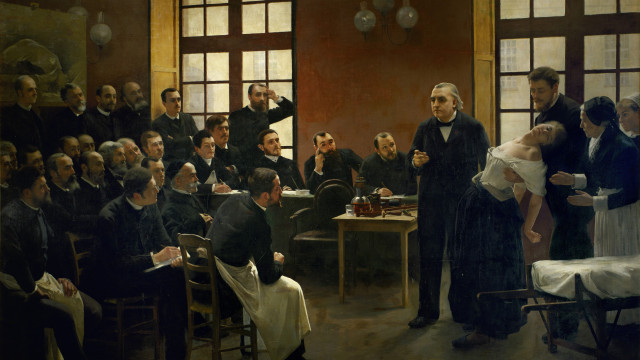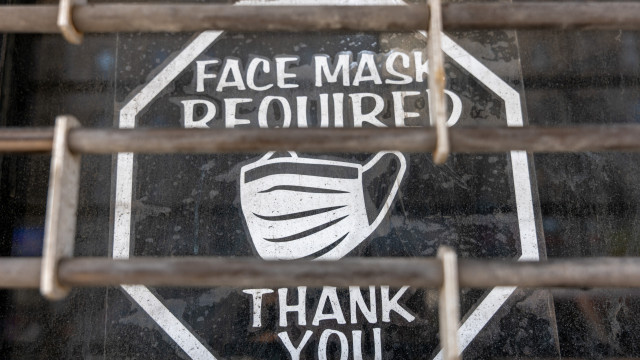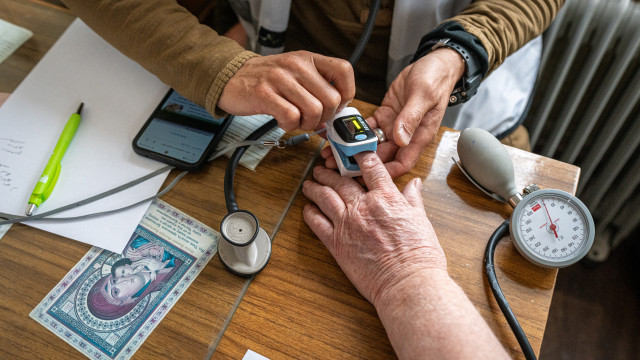



























See Also
See Again
© Shutterstock
0 / 28 Fotos
How much exercise is enough?
- In terms of exercising, you should aim for a minimum of 150 minutes of cardio a week plus two strength training sessions. This will help you maintain excellent overall health.
© Shutterstock
1 / 28 Fotos
Moving beyond the gym
- There are things you can do outside the aforementioned 150 minutes to burn small amounts of calories and promote overall health.
© Shutterstock
2 / 28 Fotos
What is NEAT?
- Non-exercise activity thermogenesis or NEAT includes all the low-effort movement that burns energy but isn't technically formal exercise. Think of movements like cleaning the kitchen or doing chores.
© Shutterstock
3 / 28 Fotos
The impact of NEAT
- NEAT movements might not seem significant at first glance, however, their cumulative effects can have a significant impact on health and calorie burn over time.
© Shutterstock
4 / 28 Fotos
Examples of NEAT
- Activities like walking through a grocery store, climbing stairs, pacing while on calls, or stretching during TV commercials all count as NEAT.
© Shutterstock
5 / 28 Fotos
Fidgeting counts too
- Fidgeting, or small actions like bouncing a leg or tapping a pen, contribute toward NEAT and burn tiny amounts of calories.
© Shutterstock
6 / 28 Fotos
NEAT around the house
- Household chores, from handwashing dishes to vacuuming or gardening, add movement and increase the energy you expend daily.
© Shutterstock
7 / 28 Fotos
Creative ways to incorporate NEAT
- Try walking while brushing your teeth, pacing during calls, or even doing quick stretches in your chair.
© Shutterstock
8 / 28 Fotos
Driving vs. walking
- It can be very tempting to drive to do your shopping or other errands but try and challenge yourself to walk instead.
© Shutterstock
9 / 28 Fotos
Why NEAT is crucial
- For those who struggle to commit to structured exercise, NEAT provides an accessible way to stay active and burn calories.
© Shutterstock
10 / 28 Fotos
NEAT’s health benefits
- NEAT can help you physically improve circulation, reduce aches, and even improve body composition. In terms of mental benefits, it can help improve your focus and energy.
© Shutterstock
11 / 28 Fotos
NEAT for weight management
- Studies show that small, everyday movements play a critical role in energy balance and weight maintenance.
© Shutterstock
12 / 28 Fotos
Aging and NEAT
- Maintaining a NEAT lifestyle as you age can help support your mobility, independence, and more.
© Shutterstock
13 / 28 Fotos
How NEAT fills the energy gap - NEAT accounts for roughly 30% to 40% of your daily energy expenditure not already used for basic bodily functions or digestion.
© Shutterstock
14 / 28 Fotos
Common NEAT activities
- NEAT activities can range from simply folding laundry to cooking dinner or even chewing gum.
© Shutterstock
15 / 28 Fotos
NEAT vs. exercise
- While NEAT shouldn’t replace regular workouts, it’s especially helpful for people who find it difficult to carve out time for formal exercise.
© Shutterstock
16 / 28 Fotos
The science of NEAT - Researchers found that small behavior changes can significantly increase NEAT and affect metabolic health as well as calorie burning.
© Shutterstock
17 / 28 Fotos
Biology and NEAT
- Things like the type of job you have, the environment you're in, and your brain chemistry can influence the amount of NEAT you naturally engage in.
© Shutterstock
18 / 28 Fotos
NEAT and occupations
- Sedentary jobs reduce NEAT. Be sure to incorporate movement by using standing desks, pacing during calls, or parking farther away from your office if you have one.
© Shutterstock
19 / 28 Fotos
NEAT as an aging ally
- In a study, older adults who burned more daily calories through activities like volunteering or household tasks were more likely to live longer.
© Shutterstock
20 / 28 Fotos
Creating a NEAT-friendly environment
- When designing your home and spaces, make choices that encourage movement. For example, put things on higher shelves so you have to reach upwards for them.
© Shutterstock
21 / 28 Fotos
Daily NEAT hacks
- Simple tweaks like taking stairs, walking during meetings, or standing while working can significantly boost NEAT.
© Shutterstock
22 / 28 Fotos
The importance of movement mindset
- If you think of NEAT as a lifestyle adjustment instead of a chore you have to do, it can help you make movement more important in your everyday life.
© Shutterstock
23 / 28 Fotos
Common NEAT missteps
- Overreliance on conveniences like elevators or drive-thru restaurants hinders opportunities to add movement to your day.
© Shutterstock
24 / 28 Fotos
The role of NEAT in sedentary lives
- If you lead a sedentary lifestyle and work a desk job, it can be even more important to take regular breaks where you walk or stretch.
© Shutterstock
25 / 28 Fotos
Tech and NEAT
- Tools like fitness trackers quantify NEAT and remind us to move, helping create awareness and encouraging consistency.
© Shutterstock
26 / 28 Fotos
NEAT as a motivator
- Focusing on NEAT and the movements associated with it can also help build a healthier lifestyle in general. Things like your diet and mental health can also improve overall with a NEAT-focused mindset. Sources: (NPR) (Cleveland Clinic) See also: The life-changing ways exercise modifies your brain
© Shutterstock
27 / 28 Fotos
© Shutterstock
0 / 28 Fotos
How much exercise is enough?
- In terms of exercising, you should aim for a minimum of 150 minutes of cardio a week plus two strength training sessions. This will help you maintain excellent overall health.
© Shutterstock
1 / 28 Fotos
Moving beyond the gym
- There are things you can do outside the aforementioned 150 minutes to burn small amounts of calories and promote overall health.
© Shutterstock
2 / 28 Fotos
What is NEAT?
- Non-exercise activity thermogenesis or NEAT includes all the low-effort movement that burns energy but isn't technically formal exercise. Think of movements like cleaning the kitchen or doing chores.
© Shutterstock
3 / 28 Fotos
The impact of NEAT
- NEAT movements might not seem significant at first glance, however, their cumulative effects can have a significant impact on health and calorie burn over time.
© Shutterstock
4 / 28 Fotos
Examples of NEAT
- Activities like walking through a grocery store, climbing stairs, pacing while on calls, or stretching during TV commercials all count as NEAT.
© Shutterstock
5 / 28 Fotos
Fidgeting counts too
- Fidgeting, or small actions like bouncing a leg or tapping a pen, contribute toward NEAT and burn tiny amounts of calories.
© Shutterstock
6 / 28 Fotos
NEAT around the house
- Household chores, from handwashing dishes to vacuuming or gardening, add movement and increase the energy you expend daily.
© Shutterstock
7 / 28 Fotos
Creative ways to incorporate NEAT
- Try walking while brushing your teeth, pacing during calls, or even doing quick stretches in your chair.
© Shutterstock
8 / 28 Fotos
Driving vs. walking
- It can be very tempting to drive to do your shopping or other errands but try and challenge yourself to walk instead.
© Shutterstock
9 / 28 Fotos
Why NEAT is crucial
- For those who struggle to commit to structured exercise, NEAT provides an accessible way to stay active and burn calories.
© Shutterstock
10 / 28 Fotos
NEAT’s health benefits
- NEAT can help you physically improve circulation, reduce aches, and even improve body composition. In terms of mental benefits, it can help improve your focus and energy.
© Shutterstock
11 / 28 Fotos
NEAT for weight management
- Studies show that small, everyday movements play a critical role in energy balance and weight maintenance.
© Shutterstock
12 / 28 Fotos
Aging and NEAT
- Maintaining a NEAT lifestyle as you age can help support your mobility, independence, and more.
© Shutterstock
13 / 28 Fotos
How NEAT fills the energy gap - NEAT accounts for roughly 30% to 40% of your daily energy expenditure not already used for basic bodily functions or digestion.
© Shutterstock
14 / 28 Fotos
Common NEAT activities
- NEAT activities can range from simply folding laundry to cooking dinner or even chewing gum.
© Shutterstock
15 / 28 Fotos
NEAT vs. exercise
- While NEAT shouldn’t replace regular workouts, it’s especially helpful for people who find it difficult to carve out time for formal exercise.
© Shutterstock
16 / 28 Fotos
The science of NEAT - Researchers found that small behavior changes can significantly increase NEAT and affect metabolic health as well as calorie burning.
© Shutterstock
17 / 28 Fotos
Biology and NEAT
- Things like the type of job you have, the environment you're in, and your brain chemistry can influence the amount of NEAT you naturally engage in.
© Shutterstock
18 / 28 Fotos
NEAT and occupations
- Sedentary jobs reduce NEAT. Be sure to incorporate movement by using standing desks, pacing during calls, or parking farther away from your office if you have one.
© Shutterstock
19 / 28 Fotos
NEAT as an aging ally
- In a study, older adults who burned more daily calories through activities like volunteering or household tasks were more likely to live longer.
© Shutterstock
20 / 28 Fotos
Creating a NEAT-friendly environment
- When designing your home and spaces, make choices that encourage movement. For example, put things on higher shelves so you have to reach upwards for them.
© Shutterstock
21 / 28 Fotos
Daily NEAT hacks
- Simple tweaks like taking stairs, walking during meetings, or standing while working can significantly boost NEAT.
© Shutterstock
22 / 28 Fotos
The importance of movement mindset
- If you think of NEAT as a lifestyle adjustment instead of a chore you have to do, it can help you make movement more important in your everyday life.
© Shutterstock
23 / 28 Fotos
Common NEAT missteps
- Overreliance on conveniences like elevators or drive-thru restaurants hinders opportunities to add movement to your day.
© Shutterstock
24 / 28 Fotos
The role of NEAT in sedentary lives
- If you lead a sedentary lifestyle and work a desk job, it can be even more important to take regular breaks where you walk or stretch.
© Shutterstock
25 / 28 Fotos
Tech and NEAT
- Tools like fitness trackers quantify NEAT and remind us to move, helping create awareness and encouraging consistency.
© Shutterstock
26 / 28 Fotos
NEAT as a motivator
- Focusing on NEAT and the movements associated with it can also help build a healthier lifestyle in general. Things like your diet and mental health can also improve overall with a NEAT-focused mindset. Sources: (NPR) (Cleveland Clinic) See also: The life-changing ways exercise modifies your brain
© Shutterstock
27 / 28 Fotos
NEAT: Getting healthy without a gym
Maximizing movement and the power of NEAT
© Shutterstock
For many, finding the right exercise routine can feel overwhelming, but staying healthy doesn’t have to mean endless hours at the gym. Though experts recommend a mix of cardio and strength training each week to support overall fitness, everyday movement—like walking, stretching, or even doing chores—can also contribute to your health in meaningful ways. By making small, consistent efforts to stay active, you can build a healthier lifestyle without overcomplicating your routine.
Curious about what NEAT is and how it can benefit you? Click through now.
RECOMMENDED FOR YOU




























MOST READ
- Last Hour
- Last Day
- Last Week








